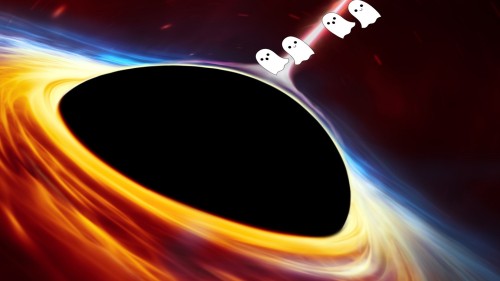At Earth we observe a flux of protons and nuclei called "cosmic rays." Their energy has been measured at up to 100 million times higher than the energy of particles accelerated at the Large Hadron Collider at CERN. What is accelerating particles and nuclei to these extreme energies?
For decades the answer has eluded us. Tracing cosmic rays to their point of origin is difficult as they are deflected by magnetic fields. Highly energetic ghost particles (neutrinos) are created in the same places as cosmic rays, but are neutral particles. Neutrino astronomy is a direct way to solve the question of the origin of cosmic rays. Neutrinos can be detected in the IceCube detector at the South Pole. Though difficult, the data can be used to reconstruct a point of origin. Even though only a few astrophysical neutrinos have been detected there is evidence for a connection with black holes.
Accreting supermassive black holes, especially those with outflows that reach relativistic speeds are promising particle accelerators that could explain high-energy cosmic rays and neutrinos. I will discuss supermassive black holes and their role in producing cosmic rays and "ghost particles."
Join us on Friday, Jan. 26, for this exciting presentation from Fe McBride, assistant professor of physics at Bowdoin College. Lunch will be available in Hayes 216 from 11:45 a.m. to 12:15 p.m. and the presentation will begin in Hayes 211/213 at 12:10 p.m. We hope to see you there!
